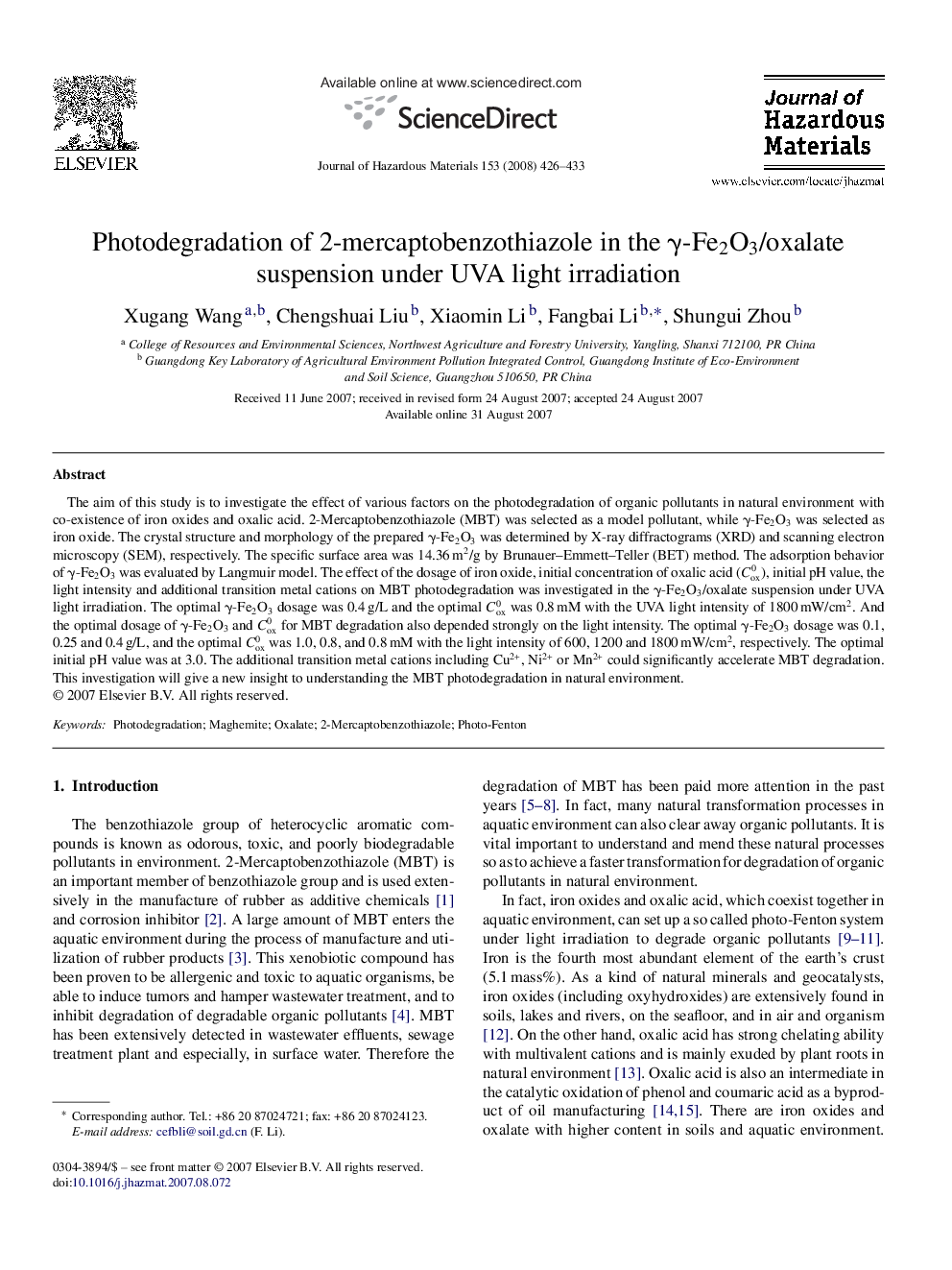| Article ID | Journal | Published Year | Pages | File Type |
|---|---|---|---|---|
| 583127 | Journal of Hazardous Materials | 2008 | 8 Pages |
Abstract
The aim of this study is to investigate the effect of various factors on the photodegradation of organic pollutants in natural environment with co-existence of iron oxides and oxalic acid. 2-Mercaptobenzothiazole (MBT) was selected as a model pollutant, while γ-Fe2O3 was selected as iron oxide. The crystal structure and morphology of the prepared γ-Fe2O3 was determined by X-ray diffractograms (XRD) and scanning electron microscopy (SEM), respectively. The specific surface area was 14.36 m2/g by Brunauer-Emmett-Teller (BET) method. The adsorption behavior of γ-Fe2O3 was evaluated by Langmuir model. The effect of the dosage of iron oxide, initial concentration of oxalic acid (Cox0), initial pH value, the light intensity and additional transition metal cations on MBT photodegradation was investigated in the γ-Fe2O3/oxalate suspension under UVA light irradiation. The optimal γ-Fe2O3 dosage was 0.4 g/L and the optimal Cox0 was 0.8 mM with the UVA light intensity of 1800 mW/cm2. And the optimal dosage of γ-Fe2O3 and Cox0 for MBT degradation also depended strongly on the light intensity. The optimal γ-Fe2O3 dosage was 0.1, 0.25 and 0.4 g/L, and the optimal Cox0 was 1.0, 0.8, and 0.8 mM with the light intensity of 600, 1200 and 1800 mW/cm2, respectively. The optimal initial pH value was at 3.0. The additional transition metal cations including Cu2+, Ni2+ or Mn2+ could significantly accelerate MBT degradation. This investigation will give a new insight to understanding the MBT photodegradation in natural environment.
Related Topics
Physical Sciences and Engineering
Chemical Engineering
Chemical Health and Safety
Authors
Xugang Wang, Chengshuai Liu, Xiaomin Li, Fangbai Li, Shungui Zhou,
